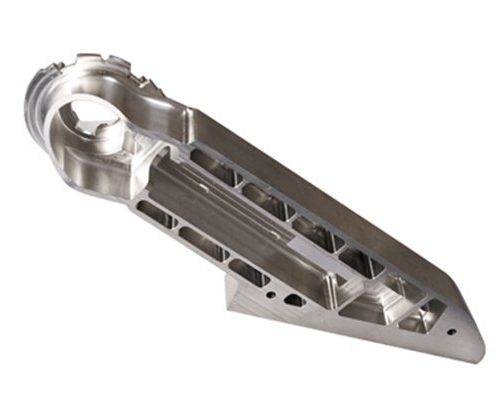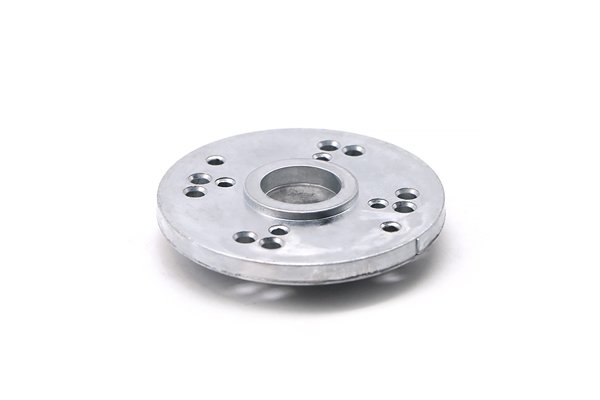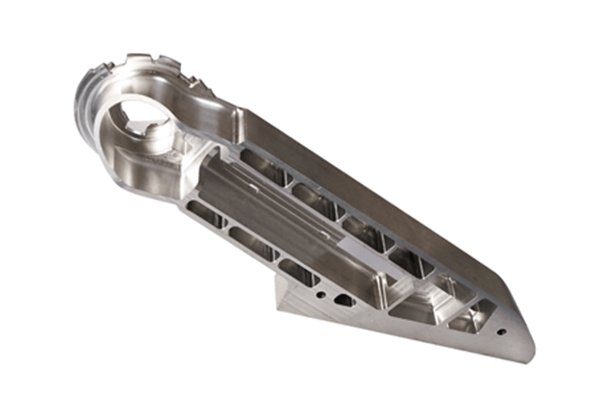Opening Remarks
Have you ever pondered how complex designs morph into tangible products? Enter the fascinating world of CNC (Computer Numerical Control) machining, where technology meets creativity to breathe life into prototypes! Whether you’re a hobbyist, an engineer, or simply someone with a curious mind, CNC machining has a lot of magic to offer, especially when it comes to custom parts. This article is your gateway to explore how this innovative process is changing the game in prototype building.
Imagine being able to take your idea, visualize it, and watch it transform before your eyes! CNC machining makes that possible, and it does so with precision, speed, and consistency. Intrigued? Let’s dive into the intricate dance of technology, engineering, and creativity.
Understanding CNC Machining
CNC machining is like a master artist wielding a paintbrush, sculpting ideas into reality with incredible accuracy. At its core, CNC machining converts computer-aided design (CAD) files into a series of precise commands for machinery, allowing for the production of intricate components that would be nearly impossible to achieve by hand.
What is CNC Machining?
In the simplest terms, CNC machining is a subtractive manufacturing process that involves removing material from a solid block to create custom parts. Think of it like carving a statue out of a robust piece of marble—you’re chipping away until only your desired shape remains. With machines that can function in multiple axes, CNC machining can create everything from tiny intricate parts to large complex components, all with unmatched precision.
How Does CNC Machining Work?
Here’s where things get exciting! After designing a part in CAD software, the design is translated into a language that CNC machines can understand. This involves generating a G-code, a set of instructions that tells the machine exactly how to move. Imagine sending your friend a recipe in a different language; without the translation, they wouldn’t know how to cook the dish!
The CNC machine then uses this data to cut, mill, or drill the material, gradually forming the part layer by layer. The beauty of CNC lies in its adaptability—different materials can be processed, and intricate designs can be executed with effortless precision.
The Role of CNC Machining in Prototype Building
Prototype building is like constructing the blueprint of a house before it becomes a reality; it’s essential for testing designs and materials before full-scale production. CNC machining plays a pivotal role in this process by providing several advantages.
Speed and Efficiency
Have you ever tried to bake a cake with a slow oven? It’s not fun! Similarly, traditional machining methods can be quite time-consuming. CNC machining accelerates the prototyping phase, reducing lead times significantly. Parts that used to take weeks to produce can now often be finished in a matter of days. This speed can make or break a project, especially in industries where time-to-market is crucial.
Precision and Accuracy
Remember the last time you tried to assemble IKEA furniture without the right tools? Frustrating, right? Precision is paramount in prototyping, and CNC machining delivers it consistently. With tolerances that can be as tight as ±0.01 mm, CNC machining ensures each part fits together seamlessly.
Cost-Effectiveness
While investing in CNC machining services may seem daunting at first glance, think of it as buying a high-quality tool that saves you both time and money in the long run. With efficient material usage and the ability to produce complex designs without significant tooling costs, CNC machining proves to be a cost-effective solution for many businesses.
Applications of CNC Machining in Prototype Building
CNC machining isn’t just for one industry; it’s a versatile tool used across various fields. Let’s explore some key applications:
Aerospace Industry
In the aerospace world, precision is non-negotiable. CNC machining is employed to create parts that endure extreme conditions. Components like brackets, frames, and turbine blades leave the machine with exact specifications needed for safe and efficient flight.
Automotive Sector
The automotive industry relies heavily on CNC machining for prototyping parts. From engine components to bespoke modifications, CNC allows for rapid iteration of designs, ensuring that vehicles are both innovative and effective.
Medical Device Manufacturing
In the medical field, the stakes are high, and the tolerance for error is minimal. CNC machining produces prototypes for surgical instruments and medical devices that must adhere to stringent regulatory standards, showcasing the technology’s critical role in healthcare.
Consumer Products
CNC machining is also a game-changer for consumer products. Whether crafting customized phone cases or creating parts for electronics, the agility of CNC minimizes the time between product conception and market entry.
Choosing the Right CNC Machining Partner
Finding the right CNC machining company is like finding the perfect workout partner—it can make all the difference! Here are key factors to consider when selecting a prototyping service:
Experience and Expertise
Look for companies with solid experience across various industries. These firms will have a robust understanding of the unique challenges and requirements within your field, ensuring they can handle your project with precision.
Technology and Equipment
Ensure that the machining service boasts modern machinery, such as multi-axis CNC routers. Advanced technology allows for greater flexibility and capability in producing complex designs.
Quality Control
It’s essential to work with a partner who prioritizes quality control measures. Look for certifications (like ISO) that indicate the company’s commitment to maintaining high standards throughout the production process.
Customer Service
Finally, don’t underestimate the power of good communication. A company that provides excellent customer service will keep you informed throughout the process and be open to adjustments based on feedback, leading to a better working relationship overall.
The Future of CNC Machining and Prototyping
As we shift into a new era of manufacturing, CNC machining is evolving alongside technological advancements. From integrating AI and machine learning to fostering better automation processes, the future is bright!
Automation and Smart Manufacturing
Picture factories where machines speak to each other, sharing real-time data for seamless operations. This isn’t science fiction—it’s the future of CNC machining. By embracing Industry 4.0 principles, businesses can enhance efficiency and cut costs, promising exciting developments for prototyping and custom part fabrication.
Sustainable Practices
Increasingly, businesses are pursuing sustainability. CNC machining offers eco-friendly advantages by minimizing waste and utilizing energy-efficient machinery. This alignment with global sustainability trends sets the stage for responsible manufacturing practices.
Increased Customization
As consumers seek more personalized products, CNC machining will continue to evolve, offering unprecedented levels of customization. The ability to produce unique components on demand will be instrumental in satisfying consumer needs while maintaining efficiency.
Conclusion
So, there you have it! CNC machining is quite a fascinating intersection of art and science, constantly shaping the future of prototype building for custom parts. It brings imagination to life, turning ideas into reality with speed and precision. If you’ve been inspired to explore your creative potential, consider how CNC machining can play a role in your projects!
Whether you’re venturing into prototype building for consumer products or innovative technologies, remember that the power of CNC machining lies in its ability to make complex designs possible. There’s a world of opportunity waiting for you, and CNC machining is your gateway to bringing your ideas to fruition. So, what will you create next? The possibilities are limitless!



